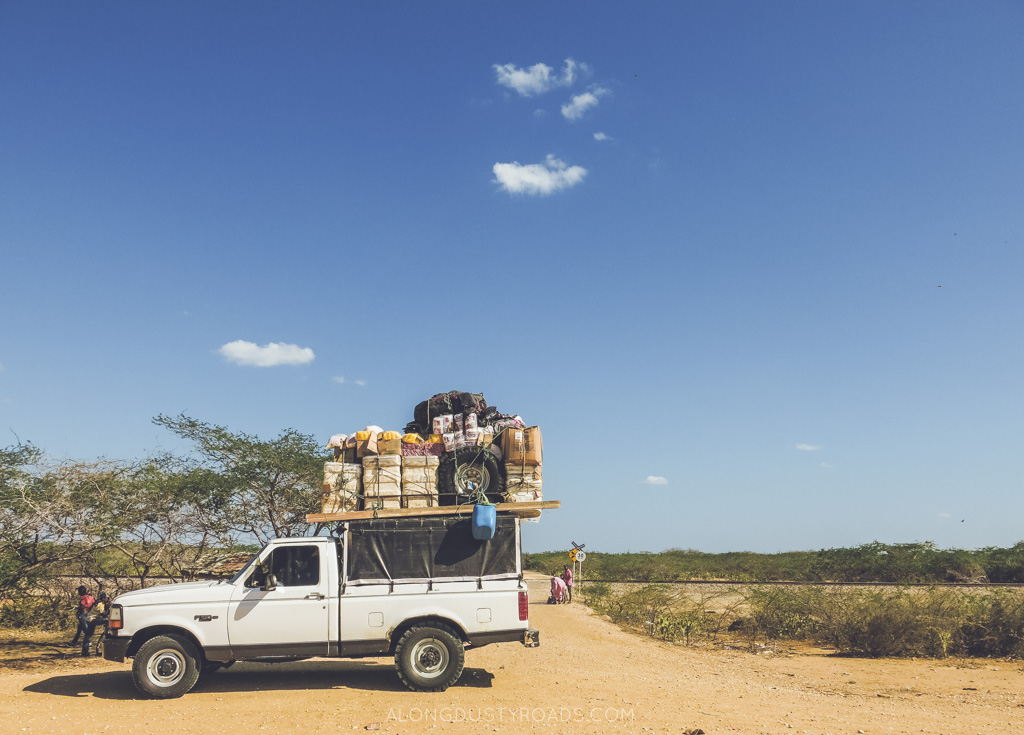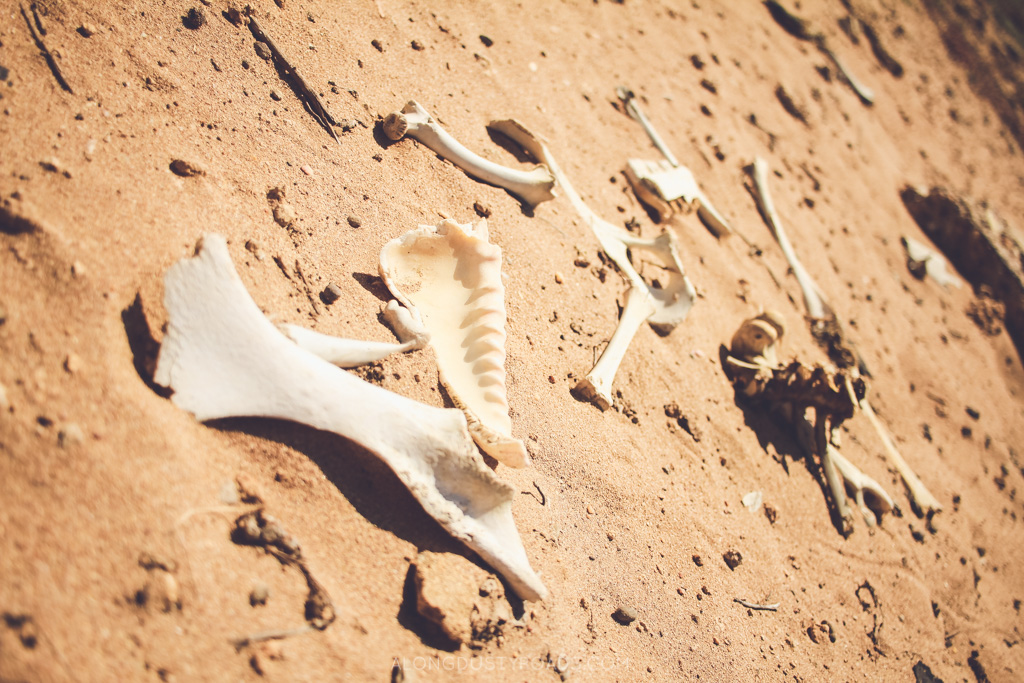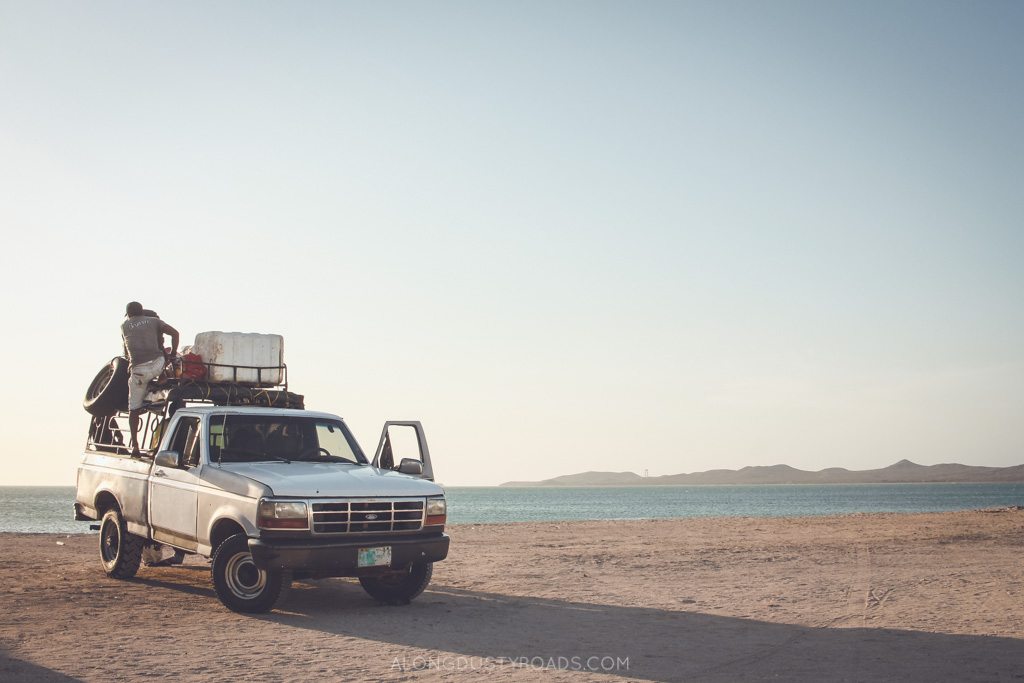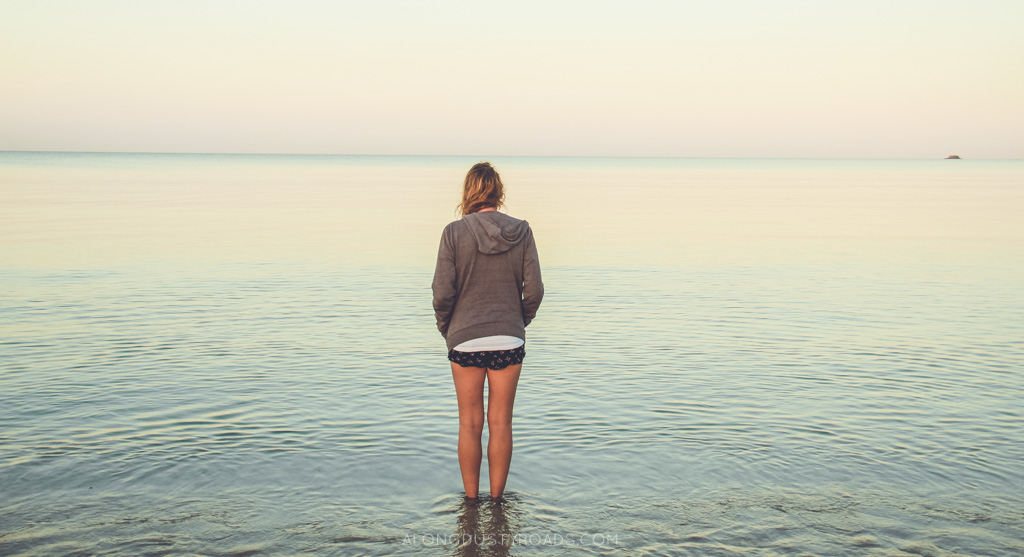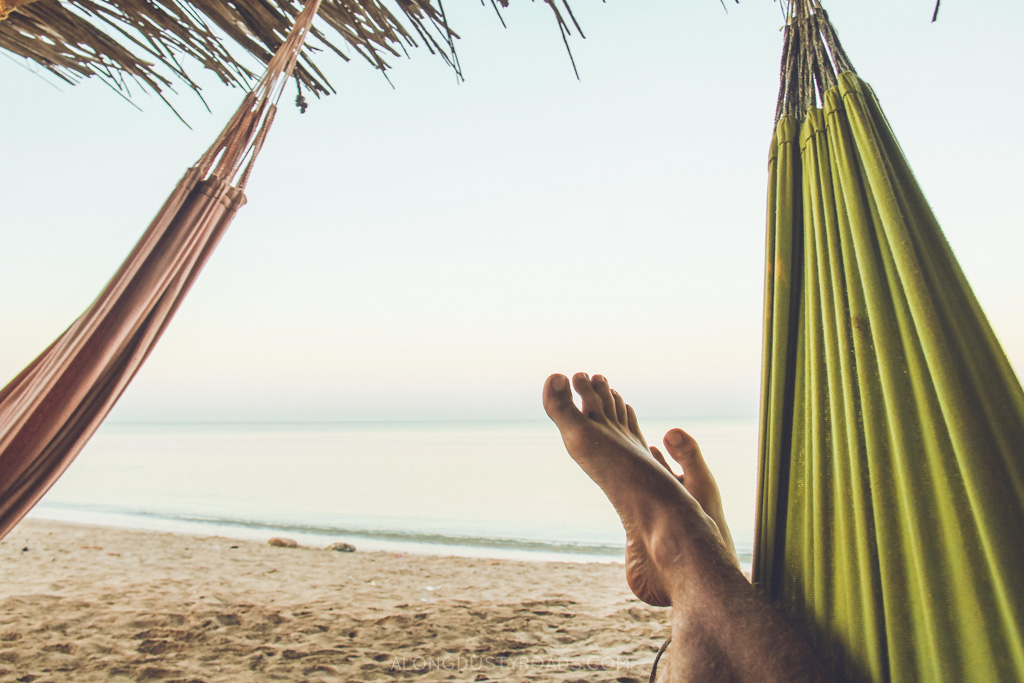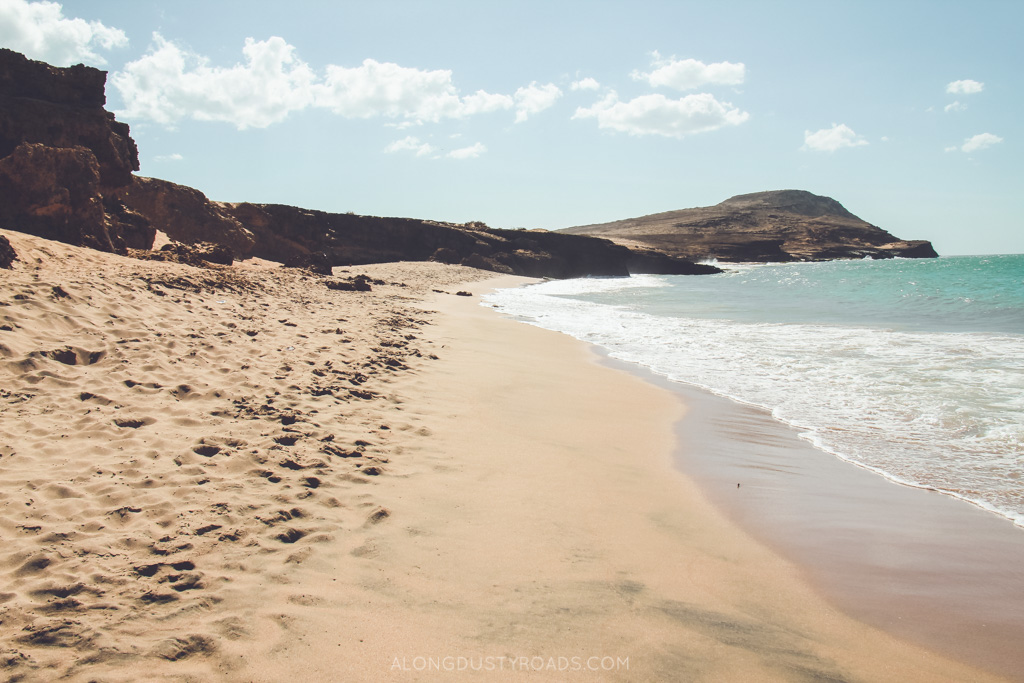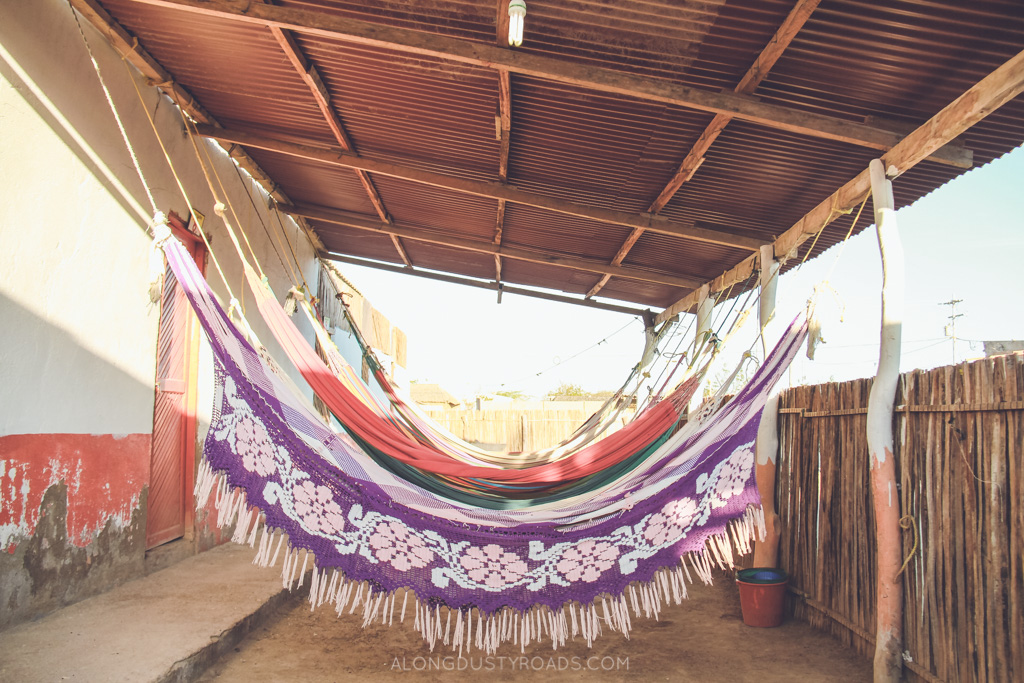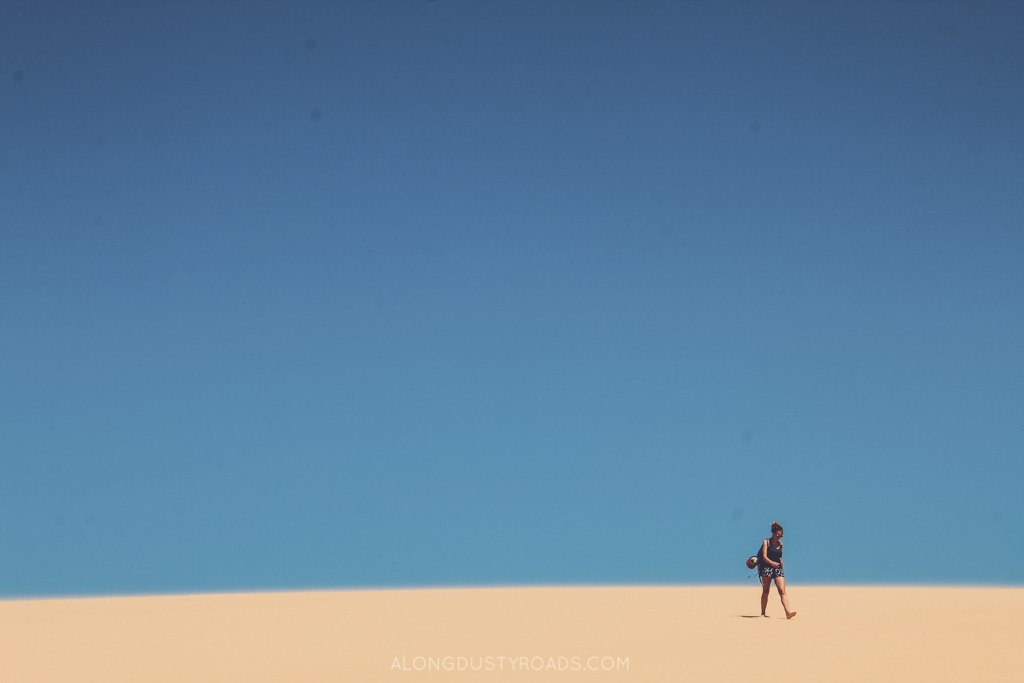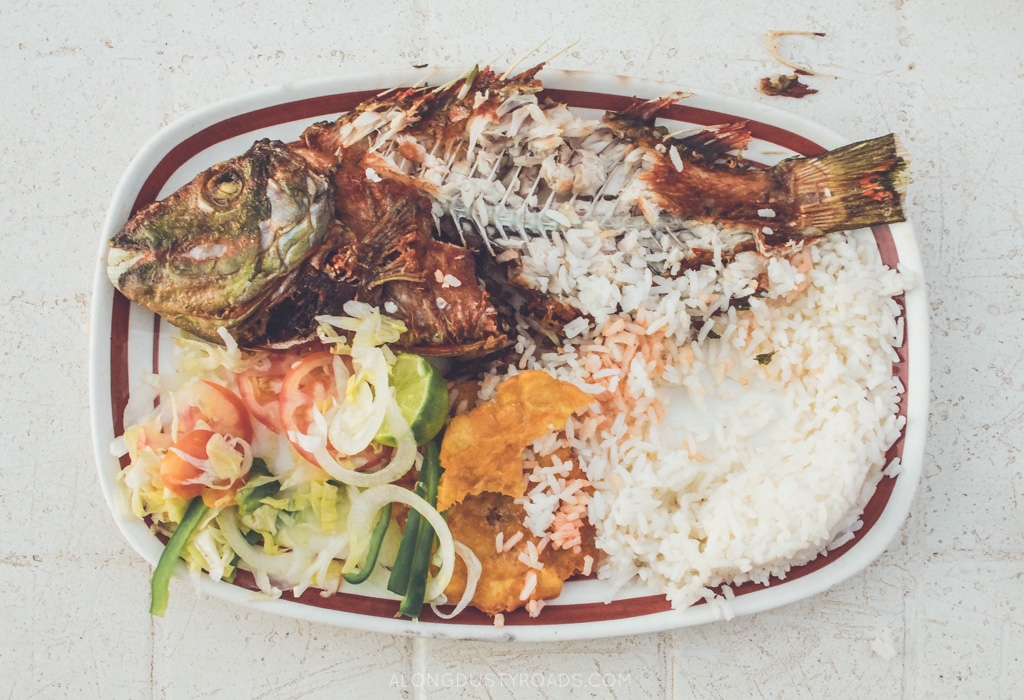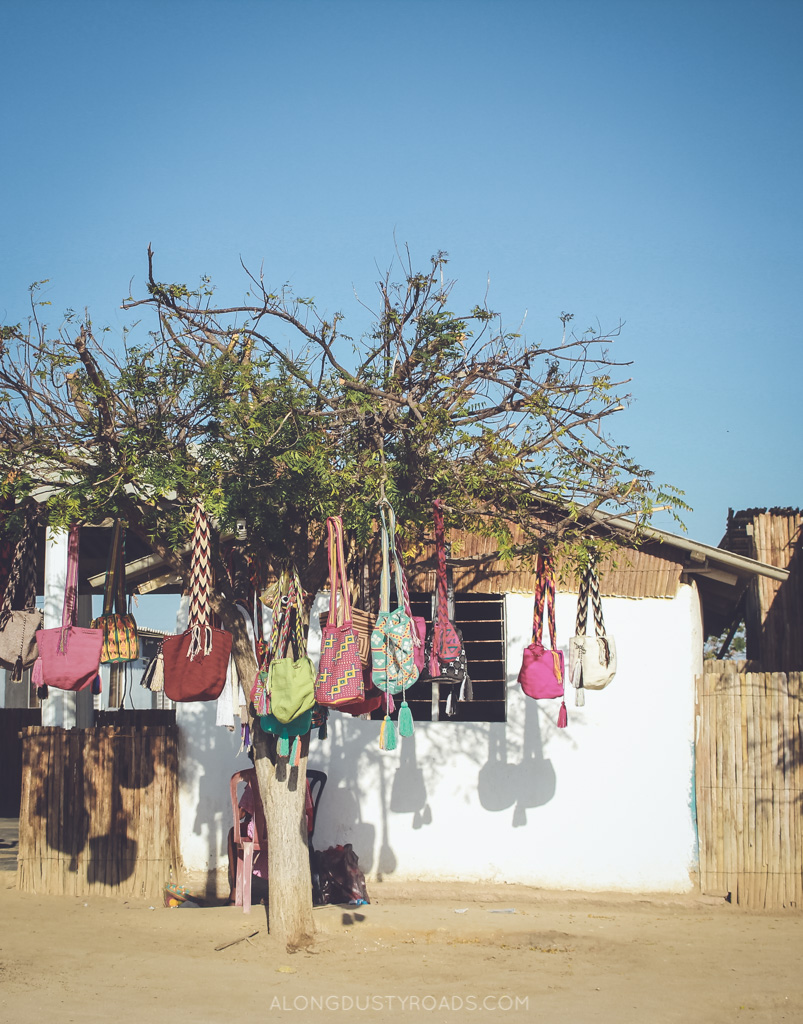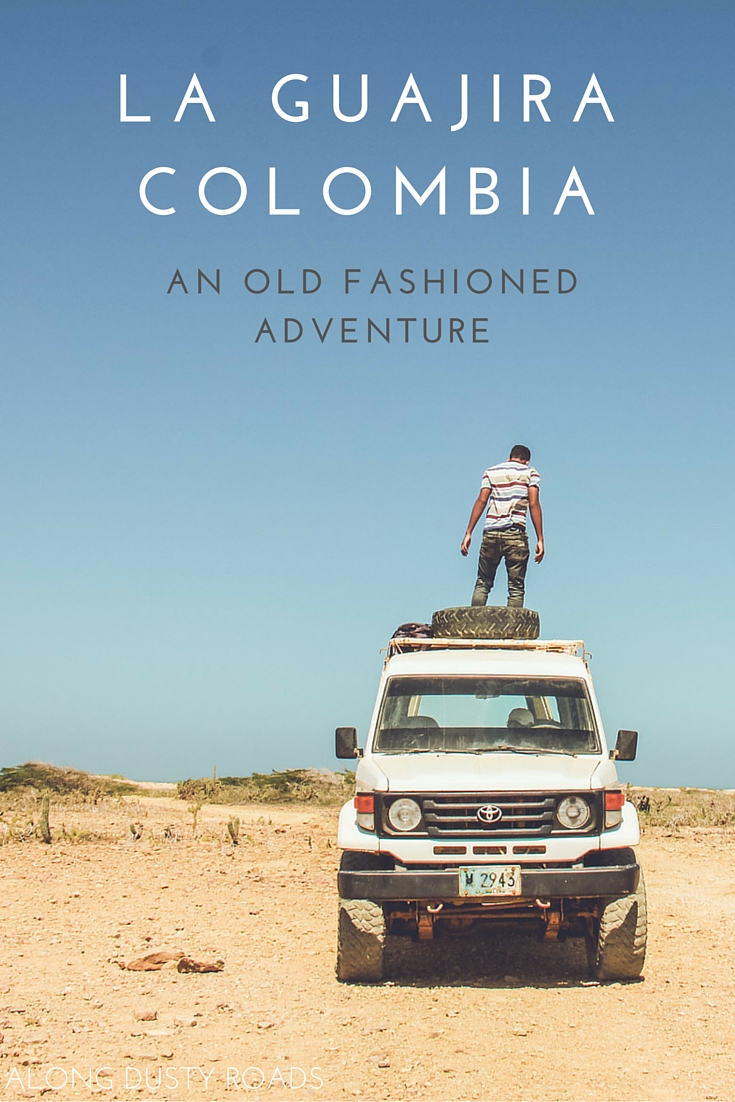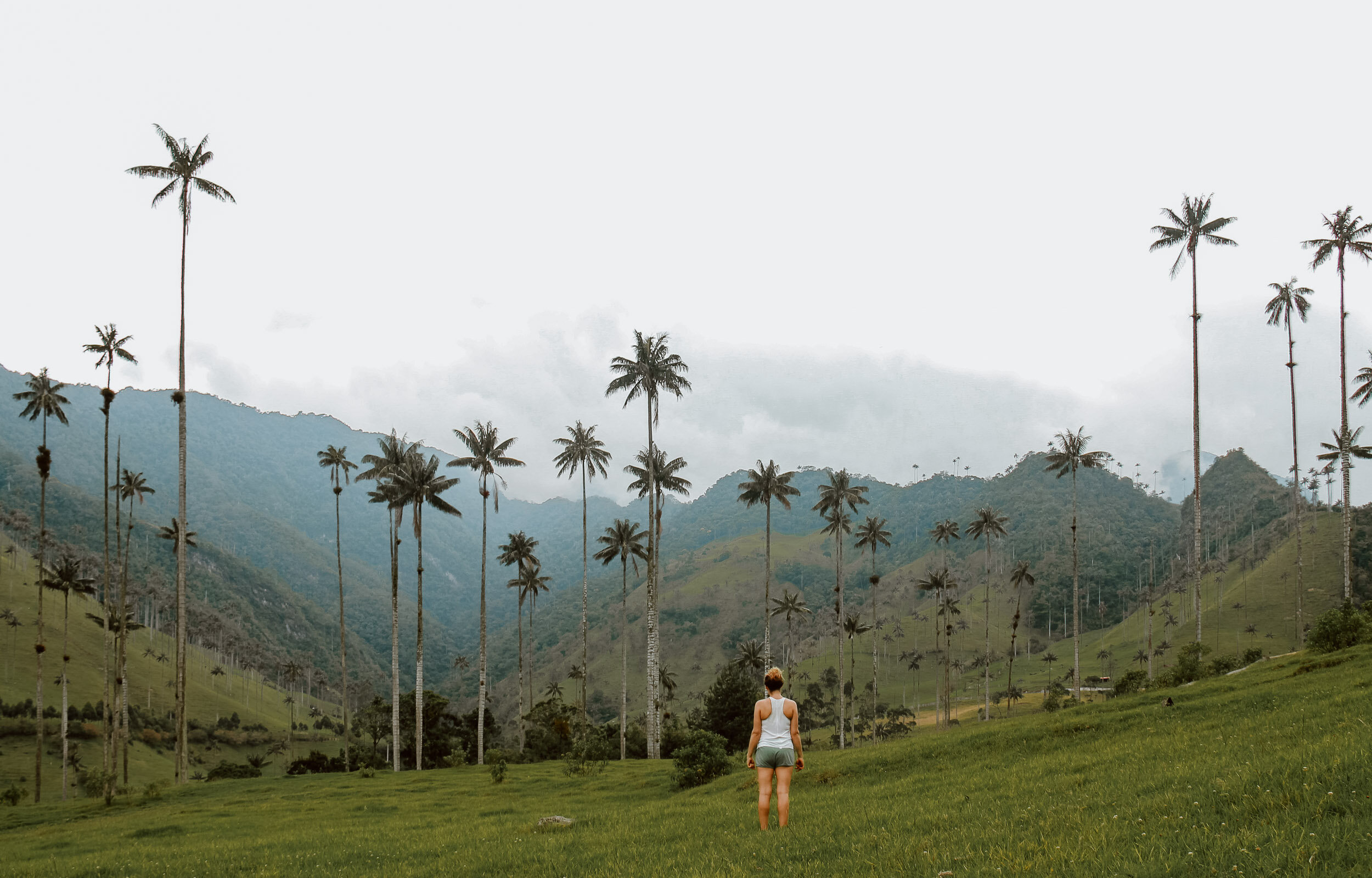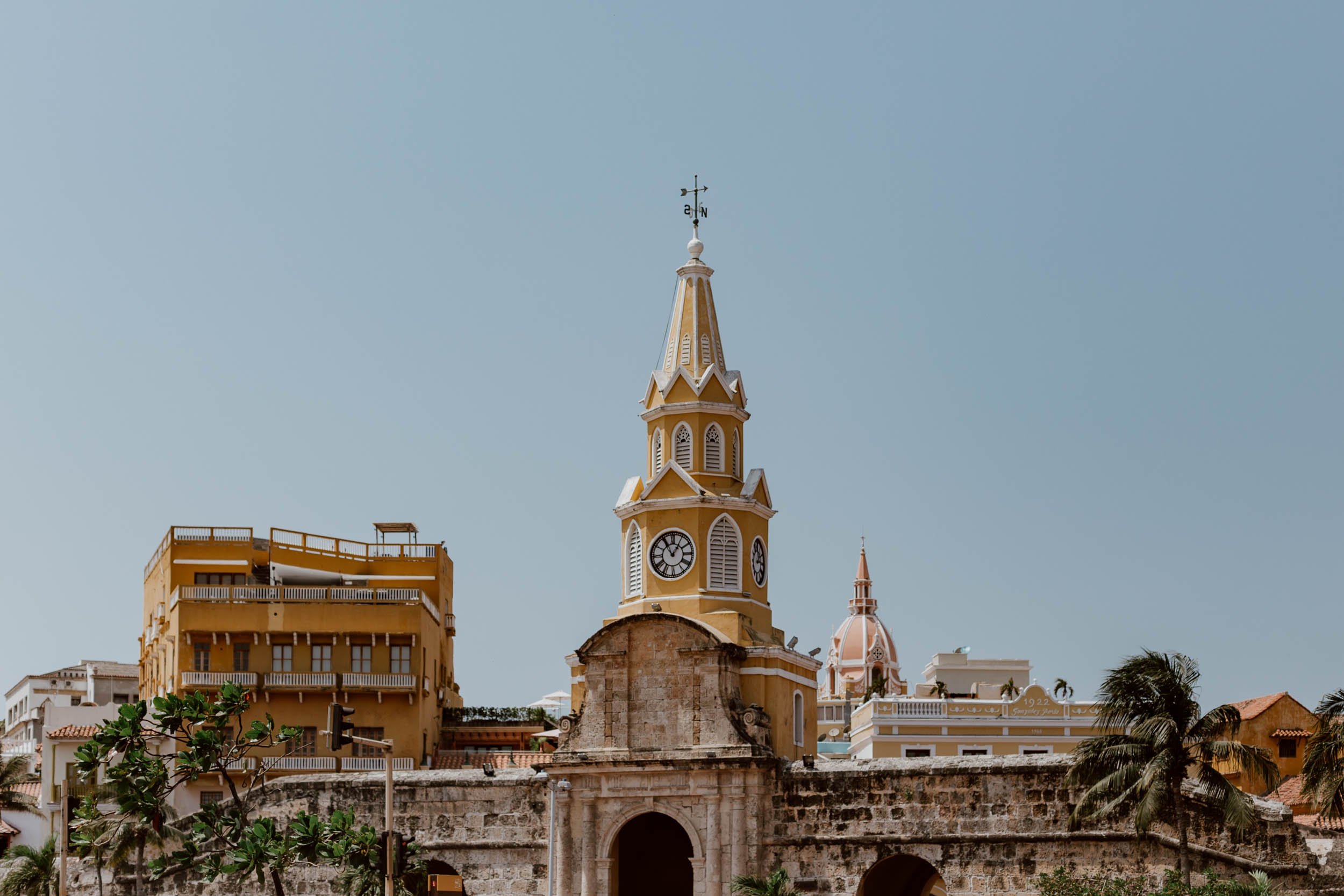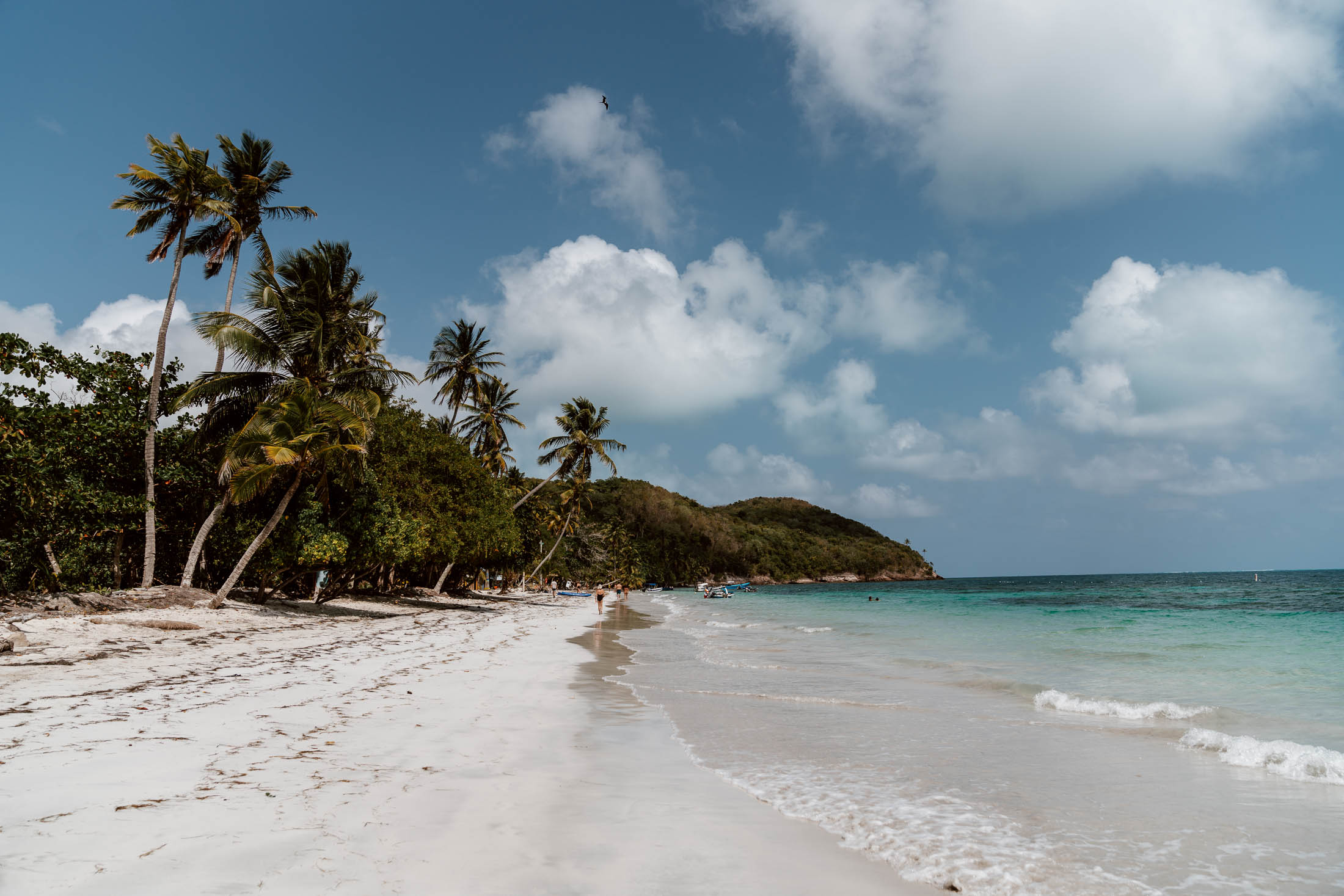When you're on a main backpacker route, it can be easy to fall into a routine and lose a little sense of adventure. Everyone is visiting the same spots, staying in the same hostels and every Facebook picture looks awfully familiar.
Occasionally on this trip, this has gotten us a little down.
This year, we were determined to find ourselves an adventure that sounded difficult on paper and would give us a sense of what travel used to be like, before the tourist shuttles and mega hostels.
The night we stumbled upon the 2014 Travel Photographer of the Year Winner's List, we knew we had found it: our inspiration.
A beautiful black-and-white portrait of an elderly woman, wrinkled from years of harsh work in the sun and eyes which made you want to know her story.
It was a stunning photo. And, as fate would have it, it was taken in the next country on our trip - Colombia. But it wasn't just taken anywhere; it was taken in the country's own version of the wild west, La Guajira. Remote and isolated, scarcely populated and just a little bit dangerous - it was exactly what we needed to reinvigorate our spirit of adventure.
the journey
There are tours that visit the coastal town of Cabo de la Vela in La Guajira on day-trips, but an air-conditioned chauffeur ride was of no interest to us - the journey to Cabo de la Vela was part of the reason to go there.
After a 3-hour bus ride from Santa Marta, we are dropped off at Cuatro Vias, a cross roads which has evolved into a de-facto market place and bus terminal, for those heading in all four directions, including the border to Venezuela (later in 2015, this border would be shut due to diplomatic tensions between the two countries). The place is hectic with people and livestock, the aroma of cooked meat mixing with dirt and sweat, and the the sickly sweet smell of smuggled gasoline. Arepa ladies share roadside space with boxes of live chickens and household goods, scrawny goats lie helplessly on the ground, tied up by the ankles.
We share a jeep with three women. The two seated in the back are mother and daughter, dressed in traditional colourful clothing with faces bearing the lines of a lifetime spent under the sun. They both smile at us curiously; the mother showing her remaining two teeth. They represent the past of Colombia, part of the Wayuu people who populate this remote part of the country. In the front seat, with sunglasses and a fluorescent pink lycra top, the glamorous 20-something girl is the future; she's visiting family here but lives in Santa Marta.
We are dropped off at another market and rushed to be the last passengers on an already full pick-up truck. These trucks are the lifeline for the remote communities in La Guajira; they depend on their daily runs not just for transport to the city but for them to bring food, drink and other essentials.
Our bags are expertly stacked on top. We take our place in the back, sharing the cab with seven others.
As asphalt gives way to dusty dirt roads (always a good sign given our moniker), the real adventure begins. Bouncing along, we get our first glimpse of the land for which we had been waiting. Comparable only to Australia's outback, this was the beginning of the end of the world.
Cacti live like weeds, battling for nutrients with desert bushes and providing both water and food for the packs of goats or solitary skinny donkey that wanders the arid landscape. In the back drop, there are endless mountains piercing a cloudless blue sky.
cabo de la vela
After a long, hot drive, which includes a beer stop for the driver and his two deputies, we pull up to where we will call home for the next couple of days. We are shown to a windowless room where we can throw our packs. In Cabo de la Vela, our beds will be hammocks on the beach.
We have visions of quiet nights, rocked to sleep by the sound of the waves. The reality is in fact a little different. Obnoxiously loud music is blaring out of the empty bar behind the beach until 1 a.m., but thankfully ear plugs muffle the worst of it. And we still have the stars to distract us - they flood the sky.
We awake as dawn breaks over the unimaginably still waters of the Caribbean Sea, and peer out from our makeshift cocoon of hoodies and fluffy socks. It's 5.45 a.m.
We can't remember the last time we woke up this early.
As if she sensed somehow that the two foreigners in mismatched clothes weren't used to this hour, she confidently ran over with her thermos of the hot, sweet black coffee most Colombians prefer, proffering small white plastic cups to jolt us back to life. Sara, our tinto girl, became a good friend after a number of nights spent strung up over the yellow sand of Cabo de la Vela.
pilon de azucar
The days in Cabo are hot. Not just 'don't forget your sunscreen' hot, but the sort of hot that will kill you given half a chance. This is a place that you find yourself diving between pockets of shade and shadow, and dreaming of ice-cold water. It is without question then, that our decision to trek across a sprawling cactus patch with no clear path was a little stupid.
Screwing up our eyes against the blinding sun, we peered into the distance for a landmark; a 'north star' in the vast expanse of nothing that stretched before us. The rocky formation of Pilon de Azucar, or 'Sugar Loaf' in English, appeared so far away.
Pilon is a mecca for all who visit Cabo, its position providing 360° views of La Guajira and the turquoise waters that surround it. Families climb up together, often in their beach gear, to say a prayer and then take a few selfies with the view.
We sat for some time atop this peaceful hill, staring out at the forever, where landscapes disappear into the horizon and the world feels so empty. The heat was less up here but as our plastic bags of water dwindled to one and the sun rose higher still, it was the pocket of sand tucked beneath the red rock cliffs that was now calling our name.
The beach here is such that no picture can ever do it justice, flanked by a sea that is blue, warm and clear.
It's a popular place for vacationing Colombians to visit, and the locals peddle their bags, jewellery and ice-cold beer from basic wooden shacks overlooking the ocean.
Unfortunately, it's also victim to a particularly Latin American vice: litter. Families leave behind their styrofoam cups, beer cans, ice-cream wrappers and even nappies on the sand. This is something we've grown used to on our travels on this side of the world, but it never reduces the anger we feel at such selfishness and disregard for nature. We pick up some of the rubbish around us and put it in the nearest bin.
On the walk back, an old car, filled to the brim it seems with sandy-faced children, and with a suspension system which has seen better days, became stuck in the sand. Andrew and a local man tried to help, digging out the sand from the front tyre with their flip-flops, giving instruction to the driver and helping the giggling children try to push it out from behind. The wheels span again and again, spitting sand into sweaty faces fixed in concentration. Eventually, the car broke free, jolted forward beyond the clutches of the desert. He said a curt thank you to us and the other man before his wife scolded him. They opened up their chill-box and shared cups of chilled fizzy drinks all around.
puntas gallinas
In the relative luxury of our Santa Marta hostel, we had debated spending the extra money on a trip to Punta Gallinas. We foolishly thought that if you've gone as far as Cabo de la Vela - how different an experience could Punta offer? What we can now tell you - scream at you in fact - is to go.
As dawn broke over the deserts of La Guajira, our truck set off across the dunes, navigating the indistinct tracks that lead only to more isolated communities. The arid landscape is an easy place for tourists to lose their way, the signposts removed by locals keen to keep their whereabouts unknown. Even our driver, a young man of perhaps eighteen struggles to find the road to the river. After several erroneous attempts at finding the right path and increasingly frantic phone calls with someone more in the know proving useless, he eventually comes to his senses and stops to collect a child guide from an isolated shack.
The only other people we see that morning are women walking from nothing towards, as far as we can tell, nothing.
It took hours but under the glare of the midday sun, the river delivered us to our hammocks, and our home for the night, furnished with ice-cold beer and friendly smiles - surely a traveller's two favourite things.
In a beaten up 4x4, the local chain smoking driver transports us to some of the local landmarks. You have but a little time to enjoy the northern most point in South America, to indulge in its untamed beaches and warm Caribbean waters, to explore its virgin dunes and witness wild pink flamingoes. Yet, we will remember more of those 24 hours than the days or weeks that we spent elsewhere on this trip.
Our last meal in Cabo is taken beneath the setting sun in a restaurant that has existed as long as the tourists have. Typical of the town, we enjoy fresh fish and rice, washed down with mini-bottles of Venezeulan beer (most of the items on sale here are brought over the border, as it's cheaper than buying in Colombia).
The plump, smiling Wayuu owner tells us a little of her village's history, of what life was like before we all came.
We ask her whether the tourism is a good thing and she is quick to agree. Without us, her restaurant would have no customers, nor her daughter's across the road. For 40 years, she tells us, tourists have been here to sell bags to, cook fish for and to fill the hammocks that line the water's edge. We are her lifeline.
Tourists like to spend less however these days, she says, they bargain harder for a room or a handmade bag. Still, she hopes they keep on coming.
The large kite-boarding school is testament to the developing tourist trade in La Guajira and points, perhaps, to something that will be a key factor in the inevitable changes which will come. It's supposed to be one of the best spots in the world for the sport.
However, there are plenty of other reasons why more people should make it here. The adventure, the isolation, the terrain, the chance to sleep on the beach under the stars.
For now though, the simple logistics of reaching South America's most northern point means that it will likely be some time before the end of the world becomes just another stop on the gringo trail.


